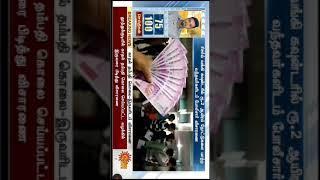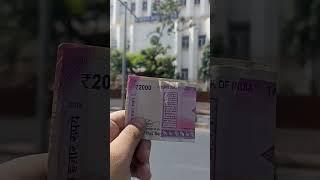RBI kitne paise kharch karte hai 2000 ke note ko print karne ke liye ?
Описание
Who Regulates the Printing of Money in India?
By JESSE NEUGARTEN
Updated June 30, 2021
Reviewed by MICHAEL J BOYLE
The Reserve Bank of India
The Reserve Bank of India (RBI), headquartered in Mumbai, India, manages currency in India.
1
The bank's additional responsibilities include regulating the country's credit systems and using monetary policy to establish financial stability in India. Before 1934, the government of India had the responsibility of printing money. However, RBI was granted its role in currency management on the basis of the Reserve Bank of India Act in 1934. Specifically, Section 22 of the RBI Act gives the bank the authority to issue currency notes.
2
The Reserve Bank of India has printing facilities in Dewas, Mysore, and Salboni.
3
KEY TAKEAWAYS
The Reserve Bank of India (RBI) prints and manages currency in India, whereas the Indian government regulates what denominations to circulate.
The Indian government is solely responsible for minting coins.
The RBI is permitted to print currency up to 10,000 rupee notes.
To deter counterfeiting and fraud, the Indian government withdrew the 500 and 1,000 rupee notes from circulation in 2016.
RBI Limitations: The Indian Government
Although the RBI has the power to print Indian currency, the government still has the final say on a majority of the Reserve Bank's actions. For example, the government decides which denominations are printed and the design of the banknotes, including the security features.
4
The Reserve Bank has the right to print currency up to 10,000 rupee notes. However, if the Reserve Bank wants to print anything higher, the government must amend the Reserve Bank of India Act. In addition, when the Reserve Bank estimates the demand for banknotes each year, it must file a written request that government officials must sign off on before printing. When making these final decisions, government officials rely heavily on advice from the Reserve Bank senior staff.
It's worth noting that in a surprise move on November 8, 2016, the Indian government announced it would be withdrawing 500 and 1,000 rupee notes from circulation to help curb counterfeiting and corruption.
5
Following the announcement, holders of these notes were able to exchange their cash at banks; however, as of December 2016, banks no longer exchange these notes. As a replacement, new 500 and 2,000 denomination rupee notes have been issued. The following denominations are now in circulation: 5, 10, 20, 50,100, 500, and 2000 rupee notes, along with the following coins: the 50 paise, and 1, 2, 5, and 10 rupees. (For related reading, see: India Discontinues 500 and 1000 Rupee Currency Notes.)
What About Coins?
While the Reserve Bank of India prints currency, the government of India directly handles the minting of coins. Coins are minted at the four mints: Alipore in South Kolkata, Saifabad in Hyderabad, Cherlapally in Hyderabad, and Noida in Uttar Pradesh.
3
Although the government handles minting coins, the Reserve Bank issues them for circulation.
Other Responsibilities
In addition to printing money, the Reserve Bank of India has other major responsibilities aimed at maintaining the stability of the Indian financial system. The Reserve Bank of India issues monetary policy and controls and supervises banks across the country.
The Reserve Bank reviews its monetary policy strategy every six months years, as well as each quarter.
6
7
8
The main objectives of the Reserve Bank's monetary policy are to control inflation, bank credit, and interest rates.
The banking system in India is made up of numerous public, private, foreign, co-operative, and regional rural banks. The Reserve Bank is in charge of supervising the overall operations of these various institutions to maintain financial stability.




















